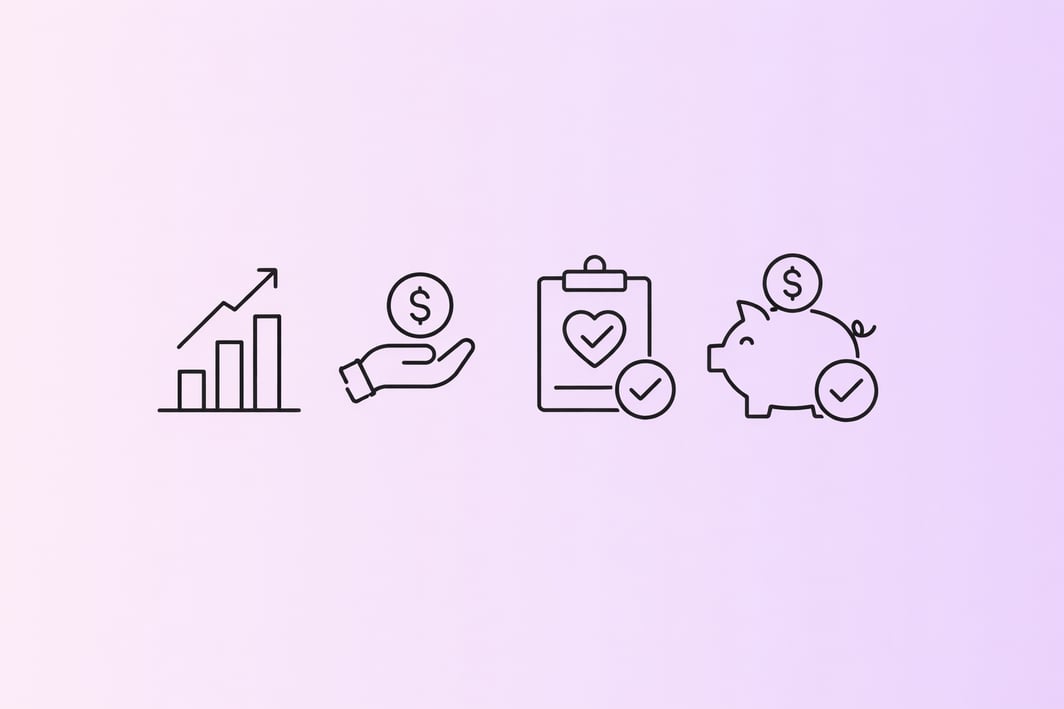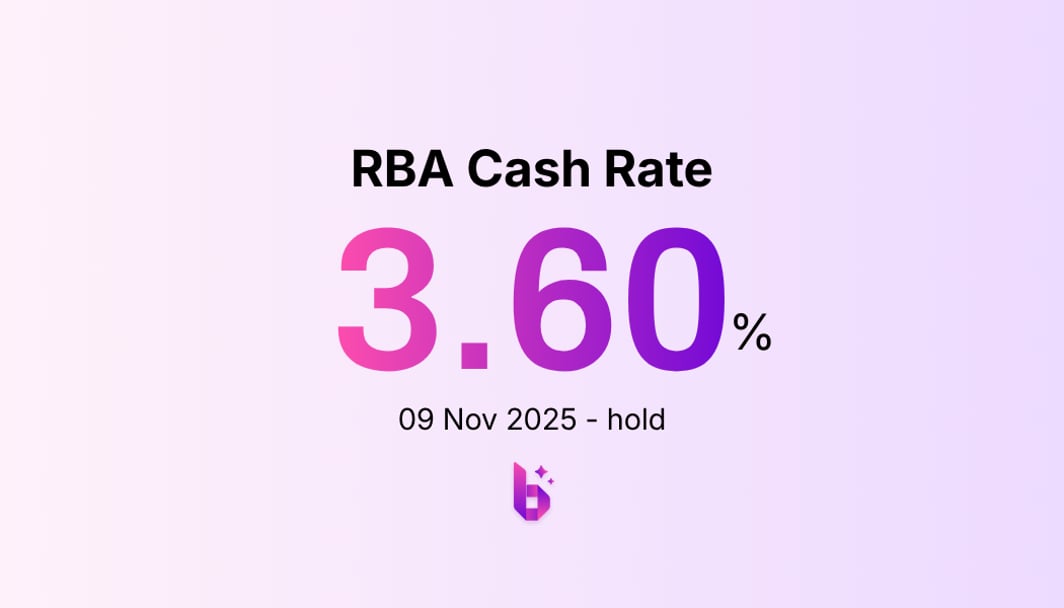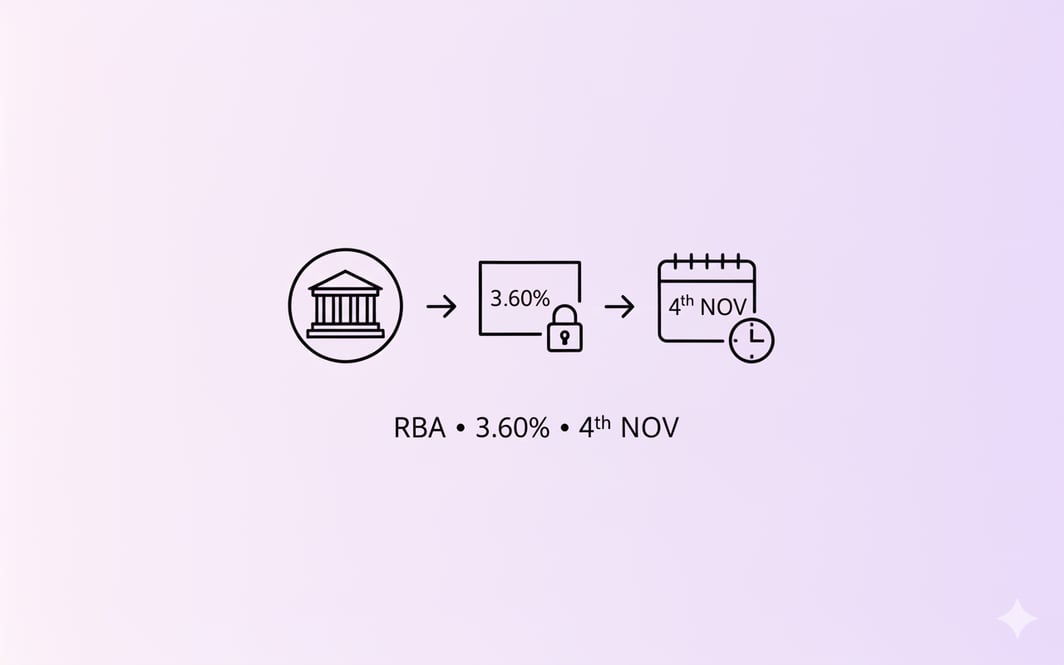Key points:
- On 12 August 2025, the Reserve Bank of Australia (RBA) delivered a 25 basis point cut, bringing the cash rate down to 3.60%.
- The last time the cash rate was at this level was around April to June 2023 when it hovered near 3.60%
- Borrowers with variable-rate home loans will see immediate relief, with potential savings of around $100 a week on a $500,000 loan if lenders pass the cut on in full.
RBA Rate Cuts in 2025: How they affect you?
The Reserve Bank of Australia has cut the official cash rate by 0.25 percentage points to 3.60%, marking its first move down since rate hikes paused earlier this year. The decision will save Australian homeowners billions in interest and give household budgets much-needed breathing room.
The RBA’s move follows inflation staying within its 2–3% target since May, slowing domestic spending per capita, and weaker global growth among key trading partners.
Example: On a $500,000 home loan, a 0.25% cut could save around $100 a week — over $5,000 a year.
Why the RBA is cutting rates now?
After lifting rates above 4% to cool inflation, the RBA now sees room to loosen policy. The decision is driven by:
- Inflation returning to target since May.
- Softening global growth, especially among major trading partners.
- Domestic spending growth per capita slowing in 2025
Still, the RBA is cautious. A bigger or faster drop could weaken the currency or stoke inflation again.
Mortgage repayments: The direct impact
Variable-rate borrowers feel changes almost immediately. With fixed-rate loans now at historic lows, most borrowers are exposed to cash rate shifts.
In early 2025, the average pass-through of a 0.25% cut was near full—saving households hundreds a month. Yet repayments still take about 10% of disposable income on average, the highest since 2012.
Savings from a 0.25% rate cut
*Based on 6% variable rate over 30 years before cut; repayments rounded.
Winners and losers
- Lower-income borrowers: Get the biggest relief as repayments take a larger share of income.
- Savers and retirees: Face lower deposit returns, which can offset any borrowing benefits.
- High-debt households: Gain large dollar savings but remain vulnerable if rates rise again.
Behavioural and psychological impact
Rate cuts don’t just alter budgets — they alter behaviour. Research shows:
- Wealth effect: Lower repayments make people feel wealthier, prompting more discretionary spending.
- Debt risk: Easier credit can tempt households into taking on more debt than they can handle.
- Confidence lift: When cuts are seen as a sign of economic stability, optimism rises and spending follows.
The RBA knows these shifts matter — it uses forward guidance to influence confidence before changes take effect.
How banks pass on cuts
The RBA sets the cash rate; banks decide what to do with it.
- In early 2025, big banks passed on cuts in full within two weeks.
- Smaller banks sometimes act faster or offer bigger discounts to win customers.
- Some lenders quietly delay passing on savings to existing customers while using sharper rates to lure new ones.
This means checking your rate is critical — you might not get the cut unless you ask.
Action plan: Maximise savings from a rate cut
- Check your current rate: Compare it to average rates published by RBA and online lenders.
- Call your lender on announcement day: Ask when and how much of the cut will be passed on.
- Negotiate: Quote lower rates from competitors. Lenders often match or beat these to keep you.
- Shop around: Smaller banks and credit unions may pass on the cut faster and in full.
- Refinance if needed: Refinancing costs are often outweighed by long-term savings.
- Use savings strategically: Make extra repayments now to shorten your loan term and cut total interest paid.
Risks to keep in mind
- Inflation risk: Too many cuts could push inflation back up, forcing sharp hikes later.
- Global headwinds: Weak growth abroad could limit the benefits of cheaper credit.
- Personal risk: Over-borrowing in a low-rate environment can lead to stress when rates rise.
Don’t assume your bank is giving you the best deal
A home loan health check could reveal you’re overpaying by thousands each year. Check your rate. Negotiate or refinance. Every basis point matters.




